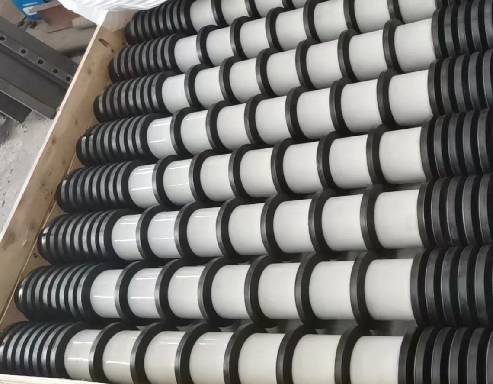 Afrikaans
Afrikaans  Albanian
Albanian  Amharic
Amharic  Arabic
Arabic  Armenian
Armenian  Azerbaijani
Azerbaijani  Basque
Basque  Belarusian
Belarusian  Bengali
Bengali  Bosnian
Bosnian  Bulgarian
Bulgarian  Catalan
Catalan  Cebuano
Cebuano  Corsican
Corsican  Croatian
Croatian  Czech
Czech  Danish
Danish  Dutch
Dutch  English
English  Esperanto
Esperanto  Estonian
Estonian  Finnish
Finnish  French
French  Frisian
Frisian  Galician
Galician  Georgian
Georgian  German
German  Greek
Greek  Gujarati
Gujarati  Haitian Creole
Haitian Creole  hausa
hausa  hawaiian
hawaiian  Hebrew
Hebrew  Hindi
Hindi  Miao
Miao  Hungarian
Hungarian  Icelandic
Icelandic  igbo
igbo  Indonesian
Indonesian  irish
irish  Italian
Italian  Japanese
Japanese  Javanese
Javanese  Kannada
Kannada  kazakh
kazakh  Khmer
Khmer  Rwandese
Rwandese  Korean
Korean  Kurdish
Kurdish  Kyrgyz
Kyrgyz  Lao
Lao  Latin
Latin  Latvian
Latvian  Lithuanian
Lithuanian  Luxembourgish
Luxembourgish  Macedonian
Macedonian  Malgashi
Malgashi  Malay
Malay  Malayalam
Malayalam  Maltese
Maltese  Maori
Maori  Marathi
Marathi  Mongolian
Mongolian  Myanmar
Myanmar  Nepali
Nepali  Norwegian
Norwegian  Norwegian
Norwegian  Occitan
Occitan  Pashto
Pashto  Persian
Persian  Polish
Polish  Portuguese
Portuguese  Punjabi
Punjabi  Romanian
Romanian  Russian
Russian  Samoan
Samoan  Scottish Gaelic
Scottish Gaelic  Serbian
Serbian  Sesotho
Sesotho  Shona
Shona  Sindhi
Sindhi  Sinhala
Sinhala  Slovak
Slovak  Slovenian
Slovenian  Somali
Somali  Spanish
Spanish  Sundanese
Sundanese  Swahili
Swahili  Swedish
Swedish  Tagalog
Tagalog  Tajik
Tajik  Tamil
Tamil  Tatar
Tatar  Telugu
Telugu  Thai
Thai  Turkish
Turkish  Turkmen
Turkmen  Ukrainian
Ukrainian  Urdu
Urdu  Uighur
Uighur  Uzbek
Uzbek  Vietnamese
Vietnamese  Welsh
Welsh  Bantu
Bantu  Yiddish
Yiddish  Yoruba
Yoruba  Zulu
Zulu High-Quality Conveyor Parts | Durable & Reliable Solutions
Understanding Conveyor Parts Essential Components for Efficient Material Handling
Conveyor systems are pivotal in various industries for facilitating the movement of materials from one point to another. Whether in manufacturing, warehousing, or logistics, conveyors streamline operations, enhance productivity, and minimize manual labor. To comprehend how these systems work, it’s crucial to understand their components, known collectively as conveyor parts.
1. Belts
The conveyor belt is perhaps the most recognizable part of any conveyor system. Typically made from rubber, plastic, or metal, belts serve as the surface upon which materials are transported. The choice of belt material depends on the type of products being moved, the speed required, and the environment in which the conveyor operates. For instance, heavy-duty rubber belts are ideal for transporting bulky items, while flat plastic belts are preferred for lighter materials.
2. Rollers
Rollers are essential components that support the conveyor belt and facilitate its movement. They are placed at intervals along the conveyor's length and can be powered (driven) or passive. Power rollers are connected to a motor and help propel the belt, while passive rollers simply provide support and reduce friction. The arrangement of rollers can significantly impact the efficiency of the conveyor system, ensuring smooth and uninterrupted operation.
3. Drive Motors
Drive motors generate the power necessary for moving the conveyor belt. The type of motor chosen depends on the weight and nature of the loads being transported. Electric motors are the most common because they provide reliable and consistent power. However, in some applications, hydraulic or pneumatic motors may be used for specific requirements.
conveyor parts

4. Chassis or Frame
The chassis provides structural support to the conveyor system. Typically constructed from steel or aluminum, the frame must be robust enough to withstand the weight and movement of both the materials being conveyed and the equipment itself. Depending on the manufacturing process, the design can also vary, accommodating various conveyor lengths, widths, and inclines.
5. Guides and Side Rails
Guides and side rails are additional features that help in controlling the movement of materials on the conveyor. They prevent items from slipping off the sides and ensure that products remain aligned as they transition through the system. These components can be adjustable or fixed, depending on the type of goods being transported.
6. Controllers and Sensors
Modern conveyor systems often incorporate advanced technology for enhanced control and efficiency. Controllers regulate the speed of the motors, while sensors detect the presence of items on the conveyor, ensuring smooth operation and preventing jams. This automation significantly reduces operational errors and enhances safety.
Conclusion
Understanding the various conveyor parts is vital for selecting the right system for your specific needs. Each component plays a critical role in ensuring efficient material handling. By recognizing how these parts work together—belts, rollers, drive motors, chassis, guides, and advanced control systems—you can optimize operational performance, reduce costs, and improve workplace safety. As industries continue to evolve, so too will conveyor technology, creating more effective and innovative solutions for material transportation.
-
Revolutionizing Conveyor Reliability with Advanced Rubber Lagging PulleysNewsJul.22,2025
-
Powering Precision and Durability with Expert Manufacturers of Conveyor ComponentsNewsJul.22,2025
-
Optimizing Conveyor Systems with Advanced Conveyor AccessoriesNewsJul.22,2025
-
Maximize Conveyor Efficiency with Quality Conveyor Idler PulleysNewsJul.22,2025
-
Future-Proof Your Conveyor System with High-Performance Polyurethane RollerNewsJul.22,2025
-
Driving Efficiency Forward with Quality Idlers and RollersNewsJul.22,2025





























